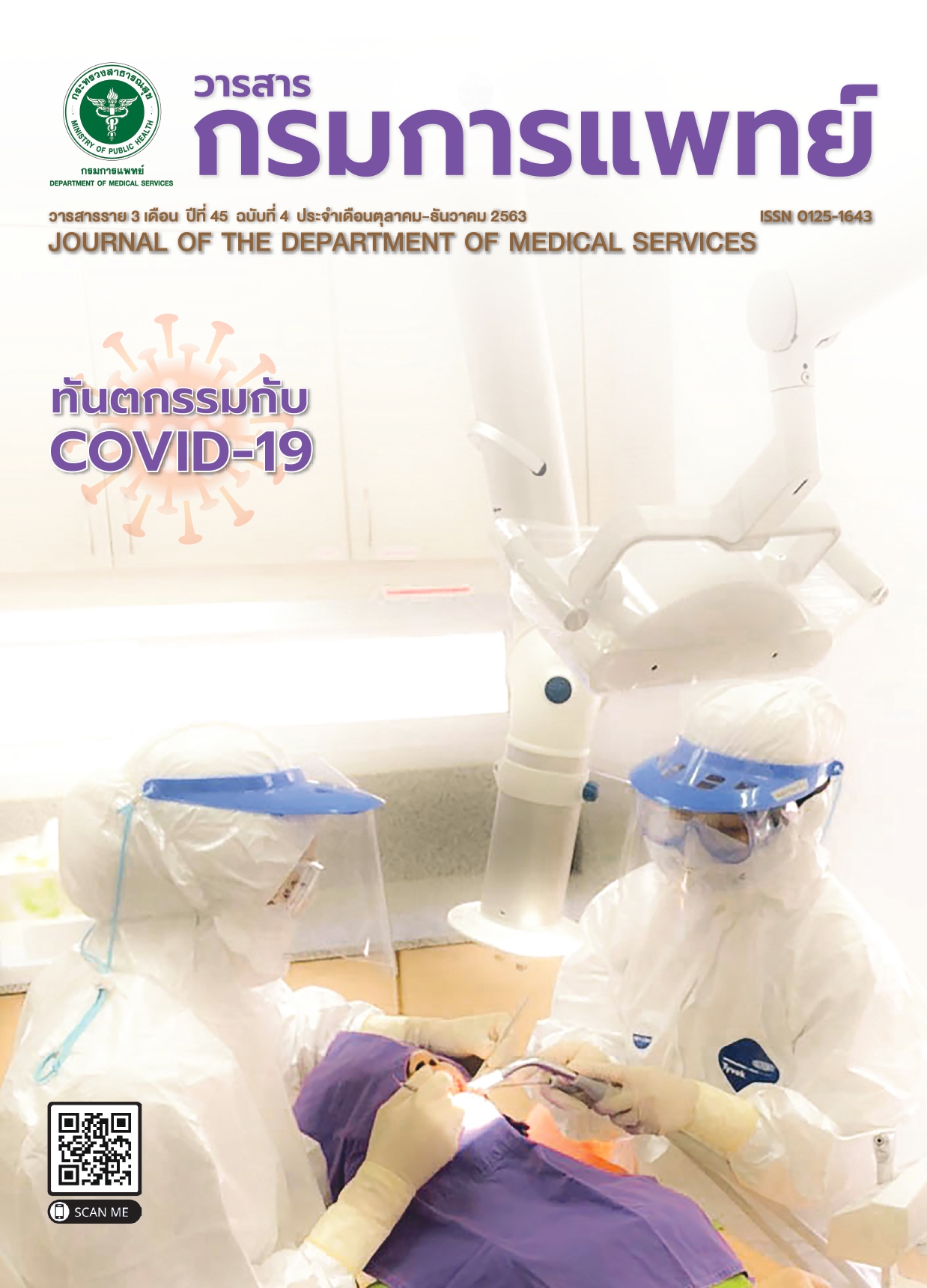Sensitivity and Specificity of Artificial Intelligence for Chest Diagnostic Radiology in Lung Cancer
Keywords:
Sensitivity, Specificity, Artificial intelligence, Chest radiograph, Lung cancerAbstract
Background : AIChest4All is the model development for screening abnormalities in chest radiograph and classification as normal, suspected active TB, suspected lung malignancy, abnormal heart and great vessels, intrathoracic abnormal findings and extrathoracic abnormal findings. The purpose of this artificial intelligence (AI) was to aid radiologists and clinicians, especially in the rural areas.
Objectives : To analyze the sensitivity and specificity of artificial intelligence for chest radiograph in diagnosis of lung malignancy.
Methods : The pathological and cytological reports were retrospectively reviewed. 800 patients of malignancy and 716 patients of non malignancy were randomly selected. The chest radiographs in a 3-month period before the procedures were collected. The chest radiographs were reviewed by three radiologists and classified as lung malignancy and non lung malignancy groups. The same radiographs were evaluated by AI and reported as percent of probability. The cut point for detected lung cancer was analyzed. The sensitivity and specificity of lung cancer diagnosis by radiologist and AI were calculated.
Results : The sensitivity and specificity in diagnosis of lung malignancy by radiologist was 67.5% and 83.1%, respectively. The sensitivity and specificity of AI to detected lung malignancy in chest radiographs was 50.0% and 84.8%, respectively. The cut point of probability percent which presented by AI for appropriated sensitivity and specificity was 52.5.
Conclusions : The sensitivity of AI in diagnosis of lung malignancy from chest radiographs was slightly less than radiologist. The specificity of AI was comparable to the diagnosis by radiologist.
References
Bray F, Ferlay J, Soerjomataram I, Siegel RL, Torre LA, Jemal A. Global cancer statistics 2018: GLOBOCAN estimates of incidence and mortality worldwide for 36 cancers in 185 countries. CA Cancer J Clin 2018; 68:394-424.
van Beek EJ, Mirsadraee S, Murchison JT. Lung cancer screening: Computed tomography or chest radiographs?World J Radiol 2015; 7:189-93.
Toyoda Y, Nakayama T, Kusunoki Y, Iso H, Suzuki T. Sensitivity and specificity of lung cancer screening using chest low-dose computed tomography. Br J Cancer 2008; 98:1602–7.
Gavelli G, Giampalma E. Sensitivity and specificity of chest X-ray screening for lung cancer: review article.Cancer 2000;89(11 Suppl):2453–6.
Quekel LG, Kessels AG, Goei R, van Engelshoven JM. Detection of lung cancer on the chest radiograph: a study on observer performance. Eur J Radiol 2001; 39:111–6.
Xu Y, Ma D, He W. Assessing the use of digital radiography and a real-time interactive pulmonary nodule analysis system for large population lung cancer screening. Eur J Radiol 2012;81:e451-6.
Toriwaki J, Suenaga Y, Negoro T, Fukumura T. Pattern recognition of chest X-ray images. Comput Graph Image Process. 1973; 2: 252–71.
Matsumoto T, Yoshimura H, Giger ML, Doi K, Macmahon H,Montner SM, et al. Potential usefulness of computerized nodule detection in screening programs for lung cancer.Invest Radiol 1992; 27:471–5.
Doi K. Current status and future potential of computer-aided diagnosis in medical imaging. Br J Radiol 2005;78:S3–19.
Schilham AM, van Ginneken B, Loog M. A computer-aided diagnosis system for detection of lung nodules in chest radiographs with an evaluation on a public database. Med Image Anal 2006; 10:247–58.
Shiraishi J, Abe H, Engelmann R, Doi K. Effect of high sensitivity in a computerized scheme for detecting extremely subtle solitary pulmonary nodules in chest radiographs: observer performance study. Acad Radiol 2003;10: 1302–11.
Schalekamp S, van Ginneken B, Koedam E, Snoeren MM,Tiehuis AM, Wittenberg R, et al. Computer-aided detection improves detection of pulmonary nodules in chest radiographs beyond the support by bone suppressed images.Radiology 2014; 272:252-61.
Coppini G, Diciotti S, Falchini M, Villari N, Valli G. Neural networks for computer-aided diagnosis: detection of lung nodules in chest radiograms. IEEE Trans Inf Technol Biomed 2003; 7:344–57.
Sakai S, Soeda H, Takahashi N, Okafuji T, Yoshitake T, Yabuuchi H, et al. Computer-aided nodule detection on digital chest radiography: validation test on consecutive T1 cases of resectable lung cancer. J Digit Imaging 2006;19:376–82.
Shiraishi J, Li Q, Suzuki K, Engelmann R, Doi K. Computer-aided diagnostic scheme for the detection of lung nodules on chest radiographs: localized search method based on anatomical classification. Med Phys 2006;33:2642–53.
Downloads
Published
How to Cite
Issue
Section
License

This work is licensed under a Creative Commons Attribution-NonCommercial-NoDerivatives 4.0 International License.
บทความที่ได้รับการตีพิมพ์เป็นลิขสิทธิ์ของกรมการแพทย์ กระทรวงสาธารณสุข
ข้อความและข้อคิดเห็นต่างๆ เป็นของผู้เขียนบทความ ไม่ใช่ความเห็นของกองบรรณาธิการหรือของวารสารกรมการแพทย์



